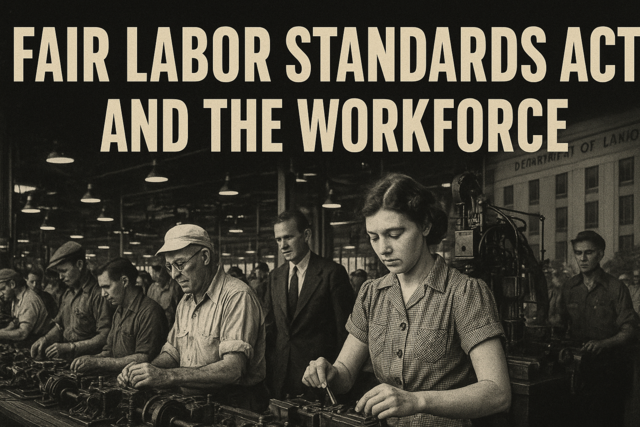|
Top Ten Ways You Know You Are Suffering from "Job Burnout"64 For whatever the reason, there comes a time in an employee's professional life that it is simply just time to move on. Whether it's a disconnect with the company's goals, dissatisfaction with a direct supervisor, manager, or the company overall, or plain ol' burnout, employees at one point or another will need to make a change. Or, it could be the employer that needs to make a change due to lack of productivity, dissatisfaction, or other problems that have either arisen over time, or suddenly, with an employee. But regardless of why, both employees and employers can benefit from the breaking of ties if done correctly. |
A. Legal Termination
- Never make commitments about tenure with the company or other employment conditions, orally, or in writing.
- Make written job offers only after consulting with an attorney or counsel.
- No one is a permanent employee, so never use this term. If a company has full-time and part-time employees, refer to the full-time employees as "regular employees," or better yet, full-time employees!
- All documents, as they relate to employment, should clearly state the company has a policy of employment "at will."
Inability to perform a job and its specific tasks and poor conduct are the two main reasons for a manager to terminate an employee. Both are self-explanatory, but firing an employee is a sensitive task. Managers must be aware of the legal implications if done incorrectly and should look to human resources for advice about dealing with particular situations. Hopefully by the time a manager must fire an employee, there is a personnel file that has documented prior warnings and shows that there has been progressive discipline about the reason for the firing. If done correctly, a progressive discipline system has given the person multiple chances to change, so the manager doesn't need to feel guilty about the firing, and chances are the employee knows what lies ahead, anyway. Although most people know why they are being fired, there are still times when someone doesn't expect it and there can be problems. Consider holding the termination in a conference room or other area that is private, so if the employee gets upset or angry you can walk out. Managers should remember, too, that whatever is said during a termination could be used against the company in a lawsuit, whether it was the truth or not. Herein lies the sensitive part of a firing. While you want to be objective and to the point, tempers can arise and things can be said that would have been better left unsaid. Having a third party present during the firing is helpful. Ideally, having someone from the human resources department that can later document the situation is best. This way, if six months from the termination, the former employee sues the company, stating that he was fired because he was told someone with a college degree was better suited for the job, there was a third party witness that can attest that wasn't said. At the end of the day it's a he said/she said situation, but having a witness certainly helps.67
After the termination, escort the soon-to-be former employee to the human resources department to fill out the appropriate paperwork. If there is no department, then the manager or supervisor would handle this. Complete the employee file by documenting why the person was fired and any other notes that would highlight the final meeting.
There are many reasons why an employee chooses to quit, whether it's someone going back to school, a mom who chooses to stay home with her children, or a spouse is transferred to another city. It could be that the employee has gone as far as he can in the company and is making a career move, or someone has decided go into business for himself. Unfortunately' more often than not, the reason the person gives for leaving is not always true, simply because he or she wants to leave on good terms. The HR department, or a manager other than that of the person leaving, should conduct an exit interview or separation interview to try to find out the real reasons as to why someone is leaving a job. When to conduct this interview is unclear. Many say it should be done before the employee leaves, typically as they are given their last paycheck, have signed off on COBRA, and have "tidied up" their job area. Others insist that a follow-up interview four to six months later is more beneficial, when the former employee is now established in a new job and can look back without emotion, and objectively discuss the reasons for leaving. Either way, it is important to gather as much information as possible.68
Just like planning an interview with a new recruit, carefully thought-out questions for an exit interview will help set the tone and mood for the conversation, and hopefully make the employee feel a bit more at ease to explain why she's leaving. Never start the discussion with, "Why are you leaving the company." This simply puts the employee on the defensive. Here is a list of some questions that might be used:69
- Tell me about the kind of work you've been doing in this position lately.
- What did you like most and least about the job?
- How do you feel about how you were compensated?
- Do you feel you've made progress in this company? Tell me how?
- How do you feel about the working conditions?
- What did you like and not like about your supervisor's management style?
- What has been your experience with team leaders and managers, other than your immediate supervisor?
- What might your supervisor or company have done differently?
- What would have made you stay longer?
Bottom line: When an employee gives notice, don't panic. Step back and put a plan into place that will help you learn more about why the person is leaving, how to make the position better, and go through the necessary steps to find a replacement.
The Worker Adjustment and Retraining Notification Act (WARN) was passed to ease the burden on employees who are being downsized. It applies to companies with more than 100 employees and typically protects those employees in industrial or manufacturing industries for when a manufacturing plant closes down or there are massive layoffs. A small number of layoffs doesn't count. WARN only protects those that go out in large numbers.70































